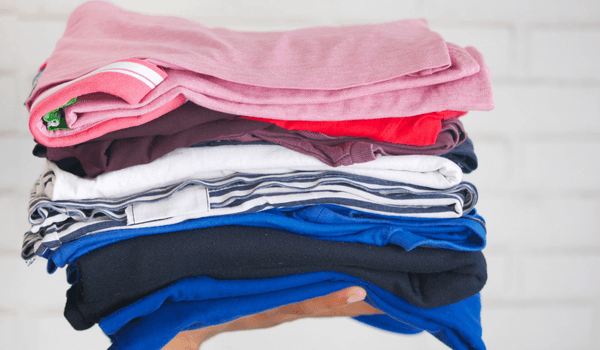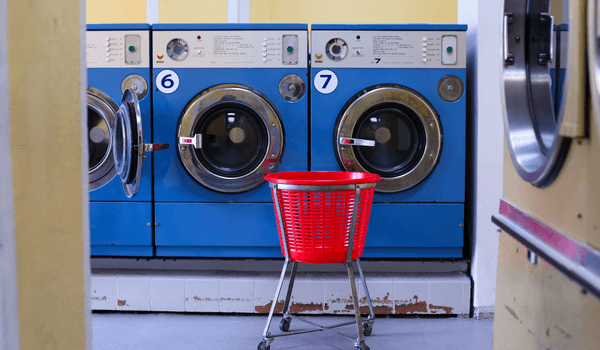Doing the laundry is a chore for us all. But perhaps even more of a hurdle is washing workwear which has been put through its paces throughout the physically demanding workday.
Hard-wearing fabrics are one of the benefits of uniforms in schools, however they easily come home covered in inks and oils that require a few extra steps to get clean. But with this additional effort comes an unfortunate and often overlooked side effect: the environmental impact. From the energy used to heat the water, to the chemicals released during the process, there are many ways in which washing workwear at home can increase our carbon footprints and cause further damage to the environment – if the correct preventative measures are not taken, that is.
Before we get into the greenest methods for washing workwear, it’s important to understand why we want this process to be as clean as possible.
What Are the Environmental Concerns of Washing Workwear?
The two most significant environmental impacts of washing workwear at home are the energy use and water consumption.
Energy Use
Did you know that 90% of the energy used during washing is from heating the water? This is costly in the more literal financial sense, but also because it amplifies our greenhouse gas emissions. It is estimated that the average household creates 2,200 kg of CO2 emissions annually by heating water; washing clothes is an undeniably large contributor to this.

Water Consumption
Another environmental concern is the water consumption itself. According to In The Wash, the average washing machine uses just under 50L of water per cycle. In addition, the chemicals used in laundry detergents and other laundry products can be harmful to the environment. These hazardous ingredients can end up in rivers, lakes, and oceans – where they may harm the wildlife.
The overuse and pollution of water is also a major concern within the textile and customisation industry. Traditional printing methods used to personalise uniforms are massive consumers of water; screen printing, for example, employs approximately 60L of water per meter of fabric. On top of this, the water used is ultimately polluted due to the chemicals present within the ink.
But, at Clothes2order, our printed uniforms, are all Greenprinted™ – a process that uses 95% less water than traditional printing methods. Our system is, therefore, substantially more water efficient; within a year, we save approximately 1.4 mil L of water compared to screen printing.
How to Reduce the Environmental Impact of Washing Workwear
Temperature
When it comes time for you to put on another wash, consider setting the machine to a lower temperature, like 30°C, to save on both these costs. Despite what you may think, most detergents work just as well at this temperature. Not to mention, using colder water boasts a few other added benefits as well. It puts less stress on your clothing overall, and if your workwear has a customisation (such as an embroidered logo) it will protect the longevity of your design, too.
Frequency
Another way to reduce the environmental impact of washing your uniform is to simply be more mindful of how often you do it. Naturally, we recommend considering this within reason and excluding the obvious exceptions. But wearing certain workwear items more than once before washing them can help reduce the number of laundry loads needed, which, in turn, reduces your overall energy and water consumption.
Product Use
It’s also crucial that you adopt the use of eco-friendly products where possible. There are multiple laundry detergents and fabric softeners (made with natural, biodegradable ingredients that are less harmful to the environment) currently on the market, and the numbers are only going up!
Additionally, investing in a washing machine with a high energy efficiency rating, and avoiding using your dryer as often as possible, will help reduce your energy consumption as well. The latter step also benefits your garments, as air-drying them will preserve their longevity better than machine-drying anyway. This is particularly true of custom branded workwear.

Claiming Tax Back After Washing Workwear
And one more thing: did you know you can actually claim tax back after washing your workwear?
If you are required to wear a specific uniform for work, and are responsible for washing and repairing it yourself, you could be entitled to £100s of tax for up to five years’ expenses. Read our handy article on how to claim uniform tax for more details on how to get set up. You’d be silly not to!
Conclusion
Alongside the task of washing workwear comes the added responsibility of doing so in the most eco-friendly manner possible. Being mindful of the environmental impacts of our actions is crucial, especially when the methods to reduce said impact are so simple.
So, in order to protect the planet as well as your personalised workwear and wallet, make sure to keep these tips in mind when you put on your next load of laundry. And if you have any more queries or concerns about how best to do it, don’t hesitate to contact our team; we’ll be more than happy to answer any questions!


